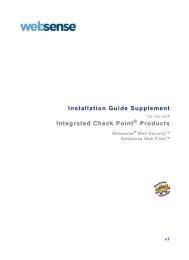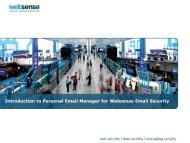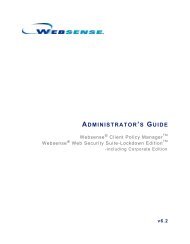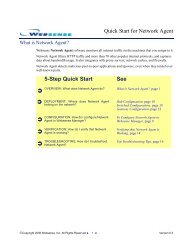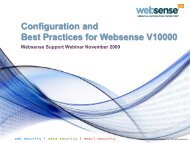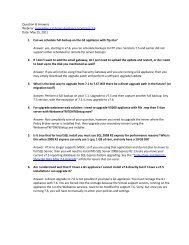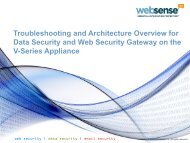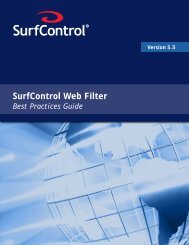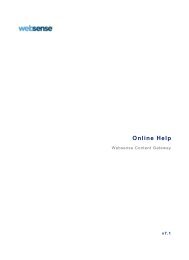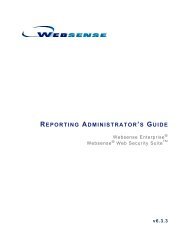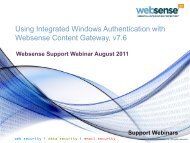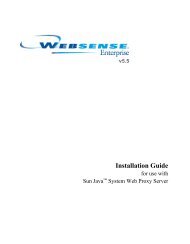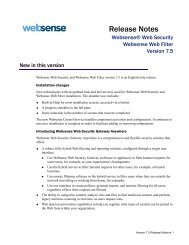You also want an ePaper? Increase the reach of your titles
YUMPU automatically turns print PDFs into web optimized ePapers that Google loves.
Chapter 1: IntroductionThe Getting Started tutorial<strong>Websense</strong> Express includes a tutorial to help you get up and running asquickly as possible. <strong>Websense</strong> highly recommends working through thistutorial. Learn how to:Verify that <strong>Websense</strong> Express can monitor and filter computers in thenetwork.Download the Master Database.Work with sample filtering definitions included with your software.Create your own filtering definitions.Identify users and computers in your network and apply filtering policiesto them.Introducing <strong>Websense</strong> Manager<strong>Websense</strong> Manager is the interface used to monitor current Internet usagefiltering and customize filtering behavior (see Chapter 2: EstablishingFiltering Policies ).You can access <strong>Websense</strong> Manager locally, from the <strong>Websense</strong> Expressmachine (Start > Programs > <strong>Websense</strong> > <strong>Websense</strong> Manager), or from aWeb browser, by entering the following:http://:8080/Manager is the IP address or name of the <strong>Websense</strong> Expressmachine, and 8080 is the default port used for remote access to <strong>Websense</strong>Manager and <strong>Websense</strong> Explorer.NoteIf port 8080 is in use, <strong>Websense</strong> software increments to thenext available port. See the <strong>Knowledge</strong> Base for moreinformation.Only one person can log on to <strong>Websense</strong> Manager at a time.10 <strong>Websense</strong>, Inc.



